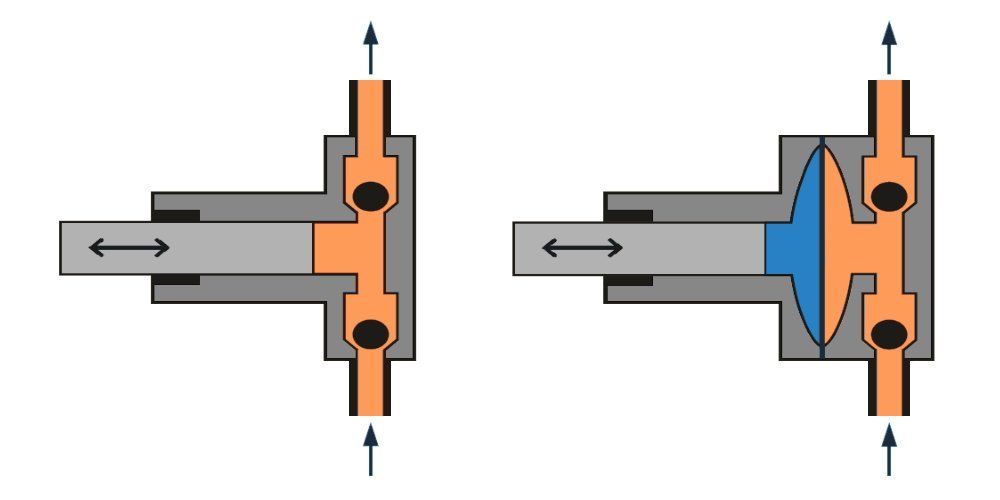Conveying raw materials and products
The transport of raw materials is essential in their processing and for internal logistics.
Depending on the state of matter and properties of the substance, different methods of delivery are used. In the case of liquids, these are pumps (positive and centrifugal pumps), in the case of gases fans, blowers, compressors, vacuum pumps and, for solids, usually conveyor belts, screw conveyors or pneumatic conveyors
Liquids
Without pumps that liquidsbe transportedno chemical plant off. A short overview of
important types and their special onesProperties that one for their application inof technical chemistry becomes hereoffered.
Pump types
Powerheads
Centrifugal pumps are by far the most common pump type. Its working principle is based on the fact that the liquid is set in motion by hydrodynamic power transmission of a propeller. No valves or flaps are required for use, but at standstill, the pumped medium can also flow backwards through the pump. By switching the running direction of the impeller or impeller, the conveying direction can also be changed.
Displacement pumps
The positive displacement pumps only work in a closed system. Consequently, valves or flaps (eg check valves) are needed. The operating principle of the pump is based on the mechanical displacement of the liquid by means of a displacer component (eg piston). This type of pump is usually self-priming. This means that even pumps designed for liquids can deliver gases for a very limited period of time and so can build up a vacuum sufficient for suction.
- Oscillating displacer - piston pump and diaphragm pump
- Rotary displacer - screw pump and rotary lobe pump










